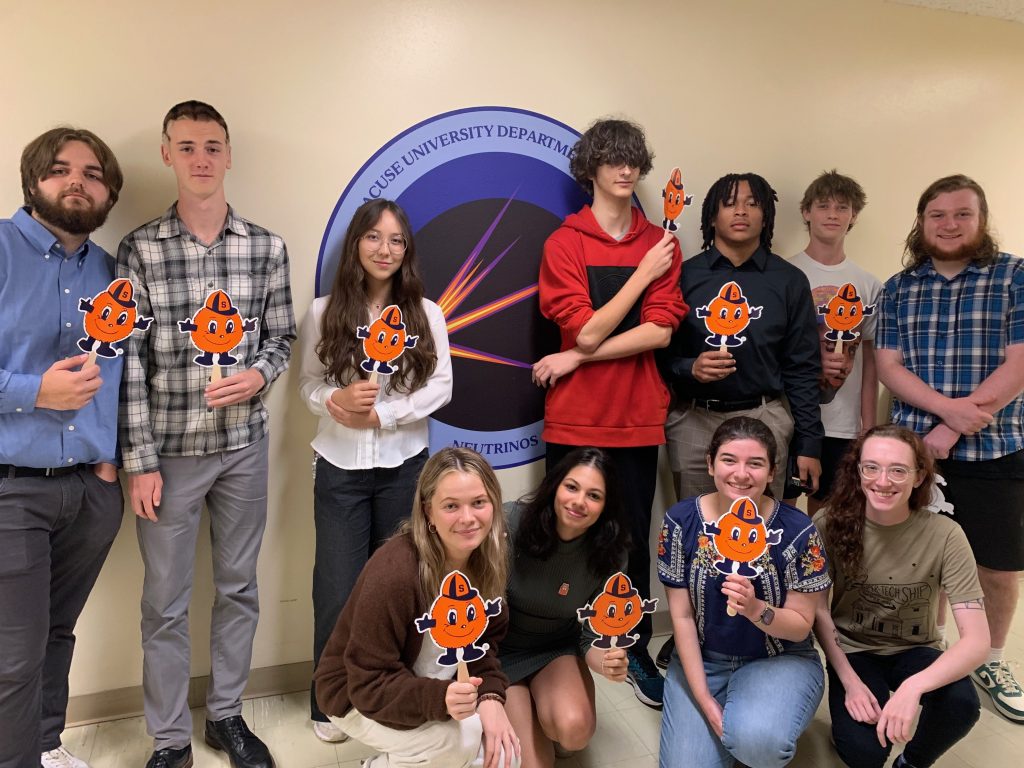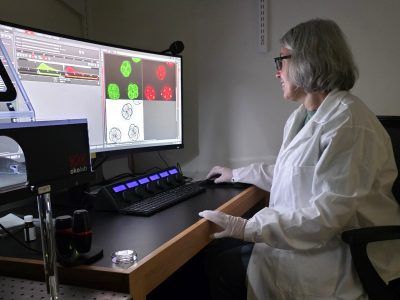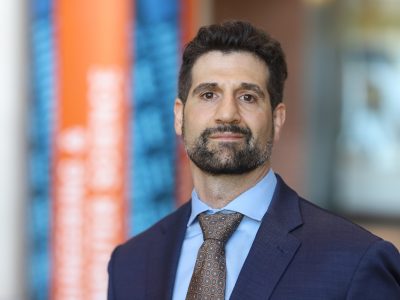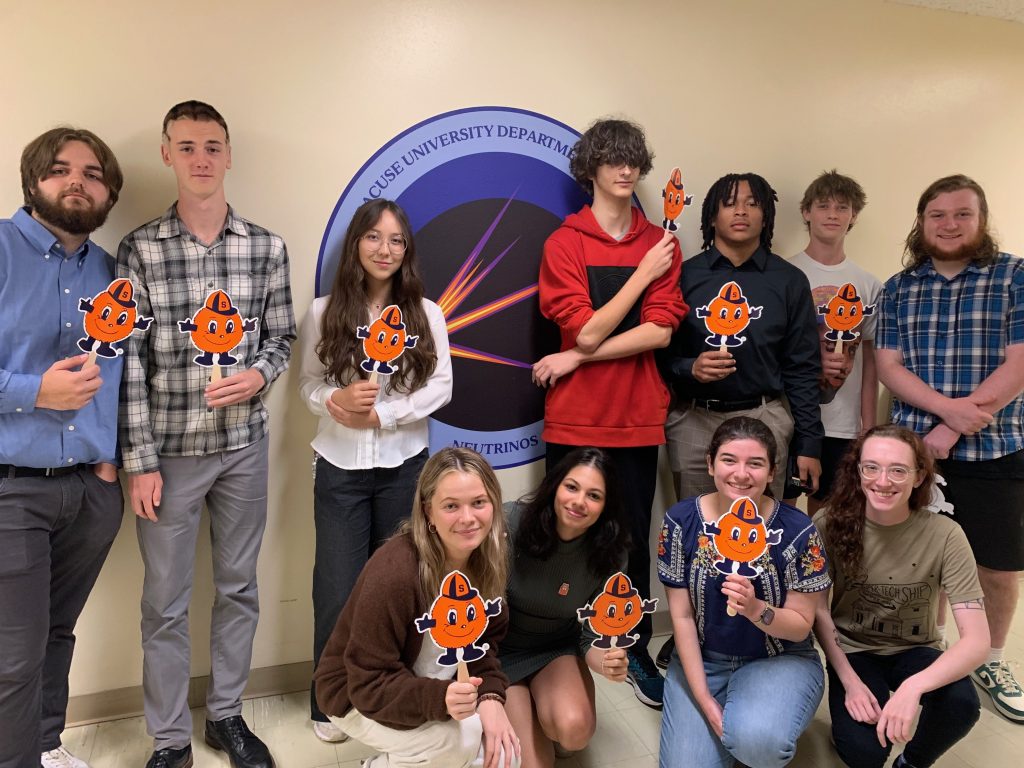
It takes sophisticated technology to study the behavior of invisible particles like neutrinos and cosmic rays, which pass through our bodies every second before zooming back off into the universe without us even knowing. While they might be tiny, these particles have massive importance, as understanding their interactions could help scientists determine why our universe exists and why all of the “stuff” in the universe, including stars, planets and people, are made out of matter and not antimatter. Faculty and students in the Experimental Neutrino Physics group in Syracuse University’s College of Arts and Sciences (A&S) are part of an international effort to explore the secrets of neutrinos.
So, what’s the buzz about neutrinos? Neutrinos and other invisible particles such as cosmic rays are produced by some of the most extreme events in the cosmos, like the Big Bang nearly 14 billion years ago or when massive stars end their life cycles in a blaze of glory known as supernovae explosions. Neutrinos come in three flavors (electron, muon and tau) and have some mysterious characteristics, such as puzzlingly low masses and the ability to oscillate, or change from one type of neutrino to another. Scientists use cutting-edge particle detectors to study the information embedded in neutrinos and make definitive determinations of neutrino properties.
Physics Professors Mitch Soderberg and Denver Whittington are working with undergraduate and graduate students, and postdoctoral researchers on everything from detector construction to operation and analysis, both at Syracuse and at larger detection sites like Fermilab. Fermilab is one of the few places on Earth where a focused beam of neutrinos can be created and aimed at a detector.
Through Fermilab’s Deep Underground Neutrino Experiment (DUNE), particle detectors are being constructed one mile underground in a former gold mine in South Dakota right in the path of a neutrino beam originating from Fermilab in Illinois. Once operational, DUNE scientists will be able to study a phenomenon called “neutrino oscillation,” which looks at how the three different flavors of neutrinos that make up the Standard Model (electron, muon and tau) change between types as they travel. These insights could reveal why the universe is dominated by matter and whether a fourth type of neutrino (sterile neutrino) exists, which would go beyond the Standard Model, indicating that there is more to the universe’s fundamental particle makeup than we currently understand.
Prototype Paves the Way

DUNE, currently under construction, will be the most comprehensive neutrino experiment in the world. But before it comes online, scientists have been testing prototype equipment and components in preparation for the final detector installation. Members of Syracuse’s Experimental Neutrino Physics group have been part of the 2×2 prototype, which recorded its first accelerator-produced neutrinos in July. While the final version of the DUNE near detector will feature 35 liquid argon modules, the prototype has four modules arranged in a square and allows scientists to validate the design.
“Our group members who are resident at Fermilab, including postdoctoral researcher Luis Zazueta and graduate student Tom Murphy, have helped with final detector construction, installation and operations,” says Soderberg. “Zazueta was the inaugural “deputy run coordinator” for the 2×2 effort, which is a leadership role important to the operation of the detector. We are anticipating more involvement in the full-size DUNE detector that the 2×2 is a prototype for.”
Exploring the Cosmos on Campus
Physics Ph.D. student Sierra Thomas is another one of the A&S scientists who has been involved in the DUNE collaboration. She is currently setting up the equipment to make observations of cosmic events at Syracuse using the new prototype “pixel” Liquid Argon Time Projection Chamber detector. Located on the third floor of the physics building, this hi-tech device allows researchers to make observations about the universe from the comforts of campus. What’s more, the experiments conducted with this equipment are contributing to the enhancement of larger detectors at Fermilab.
Watch the video below for Sierra’s take on the detector.
A Search for Oscillation
In addition to the DUNE project, Fermilab also hosts the Short-Baseline Neutrino Program, which is a chain of three particle detectors—ICARUS, MicroBooNE and the Short-Baseline Near Detector (SBND). SBND is the near detector for the Short Baseline Neutrino Program and the newest of the three. ICARUS, which started collecting data in 2021, is the far detector. SBND will measure the neutrinos as they were produced in the Fermilab beam and ICARUS will measure the neutrinos after they’ve potentially oscillated. The neutrino interactions collected from these detectors play a critical role in performing searches for neutrino oscillations, which could provide proof of the elusive fourth kind of neutrino.
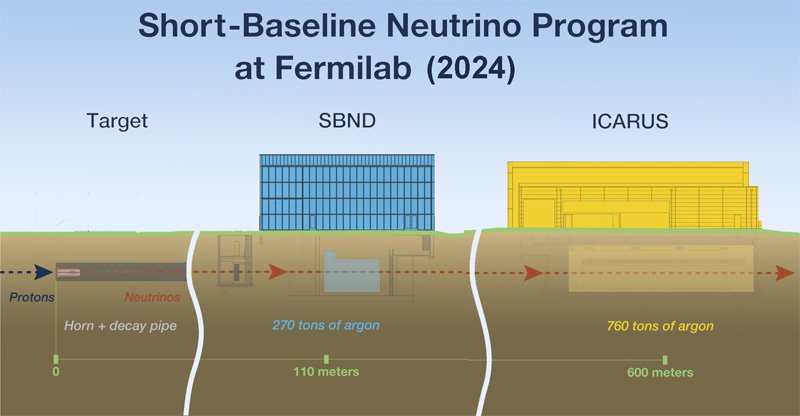
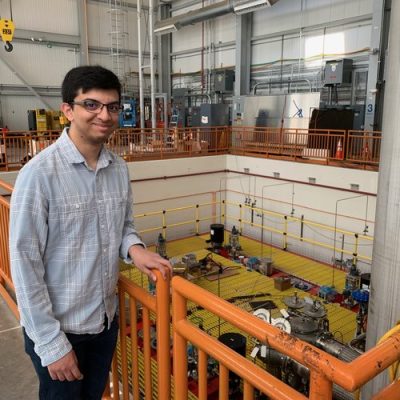
SBND, the final element that completed Fermilab’s Short-Baseline Neutrino Program, recently reached a key milestone as scientists identified the detector’s first neutrino interactions earlier this year. Members of Syracuse’s Experimental Neutrino Physics group played integral roles in constructing and commissioning the detector, whose planning, prototyping and construction took nearly a decade. Current group members Amy Filkins, a postdoctoral researcher, and Rohan Rajagopalan, a graduate student, are currently based at Fermilab and working on SBND, having made major contributions to SBND’s first operations.
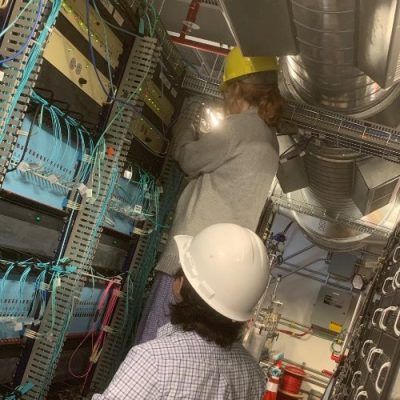
The collaboration will continue operating the detector and analyzing the many millions of neutrino interactions collected for the next several years.
“I’m proud of the work that our team has been undertaking,” says Whittington. “I find the process of building, understanding and operating these experiments very engaging, and I’m excited to see them come to fruition over the next few years.”
Students interested in hands-on, international research and exploring the secrets of neutrinos can learn more by visiting the Experimental Neutrino Physics group website.
